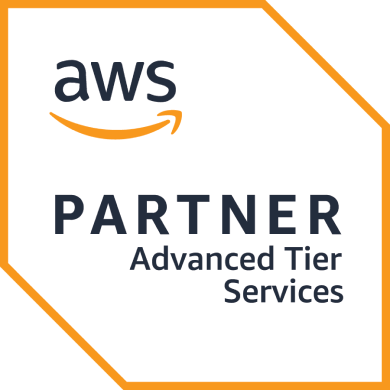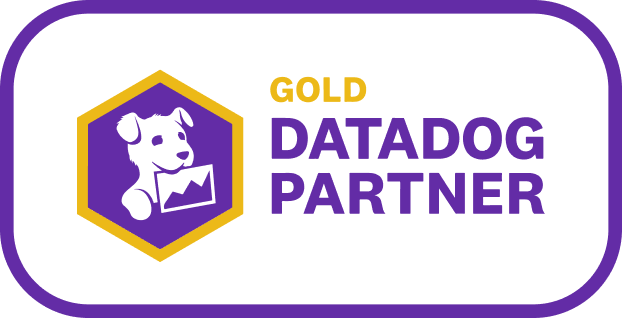Top 10 MuleSoft Integration Professional Services for Scalable API-Led Delivery
For some companies, integrating modern platforms with legacy systems isn’t just a technical challenge. It affects how fast you deliver products, how well your teams collaborate, and how securely your systems scale. That’s why more leaders like you are turning to MuleSoft integration services to build a connected, flexible infrastructure that actually supports growth.
But the truth is, not all service providers bring the same level of depth, reliability, or domain knowledge. If you’re under pressure to reduce delays, simplify operations, and speed up delivery across teams, choosing the right integration partner is one of the most important things you can do for your business.
In this guide, we’ll help you compare options and make the right decision for your organization. At the end, you’ll be completely ready to choose a professional service and not think twice about it.
But first, let’s start with what these services are and what they mean for your company.
What Are MuleSoft Integration Professional Services?
MuleSoft integration professional services are consulting services and engineering support that help you design, build, and maintain a reliable integration architecture using MuleSoft’s Anypoint Platform. These services allow your teams to connect on-premise, cloud, and hybrid systems through secure, scalable API-led connectivity.
You gain support with planning, development, deployment, and ongoing optimization, especially when working across siloed environments or legacy applications. That’s part of the reason why MuleSoft holds 6.84% of the global data integration platform market in 2025, with over 4,600 companies relying on it to manage complex, high-volume system connections.
That reach reflects how frequently technical leaders like you rely on external experts to handle scale, governance, and evolving system demands. Here’s a quick video walkthrough to help you understand MuleSoft more:
Why Do You Need MuleSoft Integration Professional Services?
MuleSoft integration professional services give you the expert support needed to deliver connected systems faster, with reduced overhead and minimal delays. Whether you’re leading a major cloud shift or trying to untangle years of system sprawl, these services help you avoid the cost and risk of fragmented solutions.
For example, MuleSoft’s Anypoint Platform is built specifically to reduce integration overhead by enabling reusable APIs, standardized governance, and faster system connectivity without overhauling your entire architecture.
These are the key advantages you can expect:
- Accelerate digital transformation through faster, reusable API delivery: If you’re working with limited headcount or tight timelines, reusable APIs help you scale without overloading your teams. At one U.S. university, an IT team built 60 APIs in six months and achieved 87% reuse. That cut delivery timelines, raised developer productivity by 40%, and saved $1.67 million. The same approach can help you align IT delivery with business objectives faster. That kind of API reuse is exactly what MuleSoft enables through its Anypoint Exchange and built-in design standards. Instead of reinventing the wheel every time, teams can scale new integrations using proven, pre-built assets that cut delivery times and reduce cognitive load for developers.
- Reduce integration costs by avoiding duplication and leveraging reusable components: By promoting modular, reusable APIs through a centralized platform, MuleSoft helps organizations avoid the very duplication that eats up budget and time. For instance, Tech, Inc. saved $3 million over three years (an average of $12,000 for every reused API) by investing in modular API design. That means fewer redundant builds and less long-term maintenance eating into your integration budget.
- Enable secure, scalable connections across cloud, on-prem, and hybrid systems: The State of Colorado completed a statewide hybrid rollout using MuleSoft in just six months. This shows how fast coordinated execution across your IT infrastructure can move with the right setup. That kind of speed is important when you’re coordinating systems across departments and need a consistent security and performance baseline.
- Improve system interoperability and data quality: When APIs communicate through defined contracts, your systems stay consistent. That reduces data mismatches, sync failures, and integration errors. With the right MuleSoft integration solutions, you can enforce data contracts and validation rules across services, so each system processes inputs in the exact format it expects.
- Simplify compliance with governance, SLA management, and API versioning: Structured oversight is built into service delivery, which makes audits and ongoing monitoring easier. Clear version control, usage tracking, and access policies let you manage regulatory requirements and internal governance without slowing development.
- Enhance agility for business teams through API-first architectures: Clean APIs help teams roll out new products faster, without waiting on backend rewrites. A modular, API-first architecture allows you to isolate functionality and deliver updates in parallel, which keeps cross-functional roadmaps moving.
- Minimize the risk of failed integrations and associated operational impacts: When your integrations break, so do your business operations. These services help you avoid that risk. Introducing structured testing, fault tolerance patterns, and real-time alerts allows you to catch failures early, before they impact customers or internal processes.
Now, let’s take a look at the top 10 service providers leading this space.
Top 10 MuleSoft Integration Professional Services
Choosing the right integration partner can shape how fast you deliver, how well your systems align, and how much risk you take on. These are the top 10 MuleSoft service providers helping companies like yours solve critical integration challenges at scale:
1. Nova Cloud
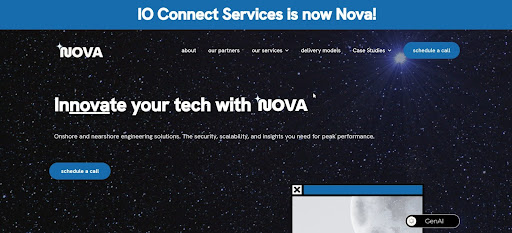
Nova Cloud delivers MuleSoft integration services with certified nearshore architects who work in sync with your U.S. teams. Our model is built around API-first delivery, focused on hybrid integration across cloud, on-prem, and legacy systems.
You get hands-on collaboration, timezone alignment, and shorter feedback loops, which is ideal for mid-market and enterprise rollouts. Nova’s teams implement full API ecosystems (Experience, Process, System) and use prebuilt connectors or custom adapters to modernize ERPs, mainframes, and other legacy platforms.
We also build CI/CD pipelines using Jenkins, GitHub Actions, and Anypoint CLI to help you release faster and more reliably. With 24/7 managed support and SLAs, Nova helps you stabilize and scale without delays or misalignment.
Key features:
- MuleSoft-certified experts based nearshore for timezone-aligned delivery.
- API-led architecture using Experience, Process, and System layers for modular builds.
- Legacy modernization through custom connectors linking on-prem systems with platforms like Salesforce and SAP.
- CI/CD automation with Jenkins, GitHub Actions, and Anypoint CLI to streamline deployments.
- 24/7 managed support including Anypoint monitoring, SLAs, and issue resolution.
Pros:
- Strong cost-value ratio and efficient delivery timelines.
- Proactive, knowledgeable engineering team.
- Flexible team sizing and consistent communication.
Con:
- Project availability may vary slightly during peak demand periods, but it is resolved quickly with scheduling.
Website: novacloud.io
Pricing: Custom quote.
2. Twistellar
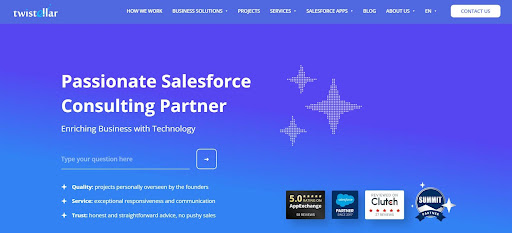
Twistellar brings a Salesforce-first approach to MuleSoft integration with a focus on API-led architecture. Their certified team builds modular, reusable APIs that link Salesforce to ERP, marketing systems, and other enterprise platforms.
They deliver a full MuleSoft scope, from initial implementation and API design to governance and ongoing support. The approach of this company helps you maintain consistent data flows, manage versioning, and enforce automated SLAs.
Twistellar also offers pre-built connectors and process accelerators to speed up delivery without sacrificing control. You can expect structured alignment with your roadmap, though their depth beyond Salesforce use cases may be limited.
Side note: Wondering how SFRA vs Headless setups impact the complexity and cost of integrations? This guide walks through the tradeoffs so you can plan smarter from the start.
Key features:
- MuleSoft-certified experts with strong Salesforce knowledge.
- Salesforce integration via bidirectional API flows.
- API strategy & architecture for modular, reuse-first builds.
- Reusable accelerators to speed initial delivery.
- Managed services with ongoing MuleSoft governance and support.
Pros:
- Professional and consistent delivery track record.
- Good satisfaction with quality and timeline adherence.
- Responsive client communication.
Cons:
- Higher hourly rates may impact smaller budgets.
- Mid-size team may limit large-scale parallel workstreams.
Website: twistellar.com
Pricing: Custom quote.
3. Sage IT
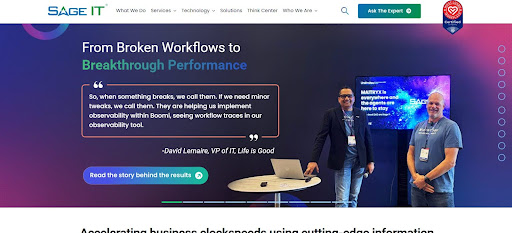
Sage IT offers MuleSoft professional services with a solid focus on compliance, security, and managed operations. Their certified consultants design API-first systems and handle end-to-end integration across cloud, hybrid, and on-prem platforms.
The company supports B2B and EDI integration and builds real-time, event-driven pipelines. With built-in governance compliant with HIPAA, GDPR, and PCI, they can manage complex regulatory demands common in finance and healthcare.
Their offering includes 24/7 support and scaling, including Mule 3-to-4 migrations. Sage IT offers regulated enterprise environments, but its larger scope may carry more process overhead and bigger minimum engagement sizes.
Key features:
- API-first architecture across enterprise environments.
- Event-driven Integration for real-time workflows.
- B2B/EDI supply chain automation.
- API security & governance for compliance.
- 24/7 managed services including major migrations.
Pros:
- Enterprise integration experience.
- AI-enhanced automation for performance and scale.
- Large delivery team with global reach.
Cons:
- High minimum engagement may exceed smaller project budgets.
- Bigger firm structure can slow decision cycles.
Website: sageitinc.com
Pricing: Custom quote.
4. ProwessSoft

ProwessSoft focuses on customized MuleSoft connectivity and B2B enablement. Their certified team helps you handle complex transitions from Mule 3 to Mule 4 while designing architectures that reduce disruption.
They support API-led connectivity using tailored connectors and templates to fit specific business logic. Their strength lies in B2B onboarding, where they implement EDI workflows to simplify data exchange with partners.
The company also delivers event-driven frameworks like pub/sub and queue-based messaging to enable real-time sync. With managed services and a Center for Enablement (CoE), ProwessSoft keeps your MuleSoft environment running smoothly across development and production.
Key features:
- Connector customization for unique system requirements.
- B2B/EDI onboarding automation for partner integration.
- Mule 3→4 migration with re-platforming support.
- Event-driven patterns using queues and messaging.
- Managed services & CoE to stabilize and optimize delivery.
Pros:
- Certified partner with a growing integration practice.
- Good technical breadth across platforms and middleware.
- Builds reusable frameworks for delivery speed.
Cons:
- Service depth may vary depending on project scope or geography.
- Custom connector work can extend delivery timelines if requirements shift mid-project.
Website: prowesssoft.com
Pricing: Custom quote.
5. Ranosys
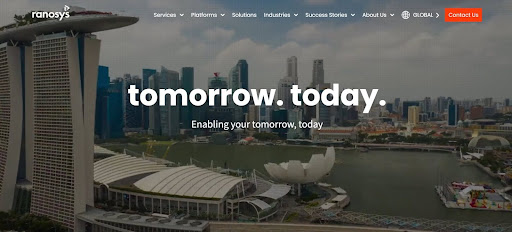
Ranosys provides MuleSoft integration through a global delivery model, focused on cloud and hybrid system workflows. Their team supports full-cycle API development and MuleSoft deployment, connecting CRMs, ERPs, and e-commerce tools into unified flows.
They help you implement structured API management with enforced governance, version control, and runtime visibility. Migration is another core focus, especially for Mule 3.x and other ESBs like TIBCO and IBM.
Ranosys’s approach uses reusable APIs to modernize system integration without full rewrites. The company also offers round-the-clock support and long-term delivery coverage for clients needing stable, ongoing services.
Key features:
- API strategy & consulting from planning to deployment.
- Multi-system integrations across cloud, ERP, and legacy platforms.
- API management with versioning and SLA controls.
- Mule 4 & middleware migration from old systems.
- Managed support with monitoring and escalation.
Pros:
- Strong presence across Asia, the U.S., and Europe.
- Offers reusable design models to cut dev time.
- Global teams maintain delivery continuity.
Cons:
- Services may be less nimble for fast-track initiatives.
- Delivery consistency could vary by region/team.
Website: ranosys.com
Pricing: Custom quote.
6. Pronix
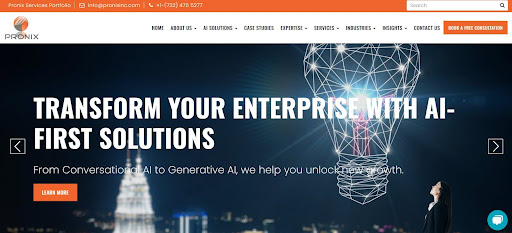
Pronix delivers MuleSoft integration projects built on an API-first approach supported by a structured Center-for-Enabling (C4E) methodology. Their focus is on helping you streamline backend and partner-facing B2B systems with reusable API patterns.
They combine MuleSoft professional services with domain-specific frameworks to improve project delivery in healthcare, retail, and financial industries. Pronix builds hybrid architectures with governance baked in from the start to ensure that what’s delivered is both scalable and supportable.
From legacy modernization to microservices adoption, they support the full lifecycle of integration, while focusing on predictability, compliance, and long-term reliability.
Key features:
- API-first/C4E methodology for governed, scalable integration delivery.
- End-to-end MuleSoft services covering consulting to managed support.
- Backend & B2B integrations with API-led frameworks.
- Budget/timeline focus using structured delivery models.
- Agile modernization of legacy infrastructure.
Pros:
- Offers structured project delivery across multiple verticals.
- Broad service catalog covers the full MuleSoft lifecycle.
- Technical stack for complex integrations.
Cons:
- QA/testing capabilities may overshadow integration focus.
- Prospective clients should request project-specific references.
Website: pronixinc.com
Pricing: Custom quote.
7. Ksolves
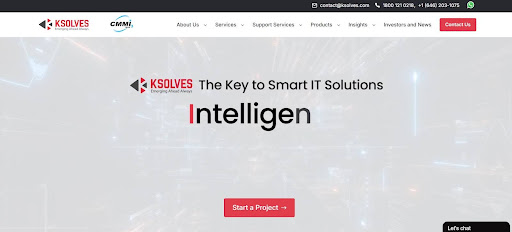
Ksolves positions itself as a cost-effective MuleSoft service provider focused on quick implementation and deployment automation. Their team handles Salesforce-centric API integrations and connects enterprise systems like Oracle, SAP, and Slack using MuleSoft’s Anypoint Platform.
They emphasize governance and automation by using tools like Anypoint API Manager and Flex Gateway to enforce policies and streamline API releases. You get help with migration to Mule 4, CI/CD automation, and operational support through their managed services.
Ksolves’s value proposition centers on delivering low-cost, technically competent integrations that suit businesses looking for fast, repeatable deployments at scale.
Key features:
- Salesforce & ERP integration through prebuilt connectors.
- API governance using Anypoint tools for compliance.
- Deployment automation with CI/CD and RTF pipelines.
- Mule 4 upgrade with guided transition.
- Managed MuleSoft support with 24/7 availability.
Pros:
- Competitive pricing makes it attractive for small projects.
- Responsive support and frequent client updates.
- Uses standard deployment automation tools.
Cons:
- Can face challenges on large, multi-phase rollouts.
- Less suited for enterprise-level, multi-system programs.
- May require tighter scope control on complex jobs.
Website: ksolves.com
Pricing: Custom quote.
8. Softwarium
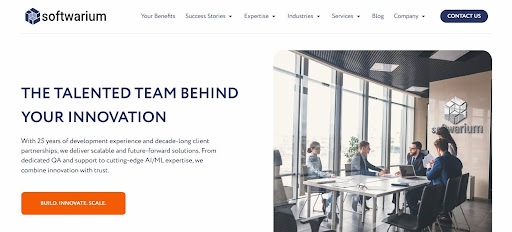
Softwarium offers MuleSoft integration services built for mid-market organizations, combining hybrid teams with flexible pricing. They deliver API-led integration across cloud, on-prem, and hybrid environments using the Anypoint Platform.
Using pre-built connectors and RAML templates allows them to cut development cycles and help you achieve faster release timelines. Softwarium focuses on proven integration patterns like bi-directional sync and broadcast models to maintain data consistency.
With strong capabilities in linking systems like Salesforce and ServiceNow to ERPs and HCM tools, they cover common enterprise use cases. Their automated CI/CD pipelines help support zero-downtime deployments.
You can also opt for ongoing support models depending on project needs and budget.
Key features:
- Custom hybrid integrations with onshore-offshore delivery.
- Accelerators & templates to reduce time to value.
- Automated CI/CD pipelines for API lifecycle management.
- Real-time integration patterns to enable consistent sync.
- Salesforce & ServiceNow connectors for key system links.
Pros:
- Flexible engagement models tailored to mid-sized businesses.
- Pre-built templates shorten development cycles.
- Automated deployments reduce downtime.
Cons:
- Higher entry cost makes it not suited for short-term projects.
- May not take on short-duration work under minimum thresholds.
- Clients should evaluate value versus cost for smaller scopes.
Website: softwarium.net
Pricing: Custom quote.
9. Closeloop
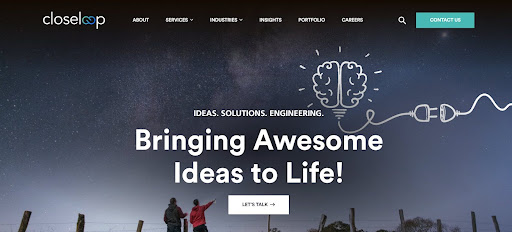
Closeloop focuses on API-led integration using MuleSoft to connect systems across the enterprise. Their services span design, implementation, and long-term support, which covers ERP, CRM, mobile, and legacy systems.
They help you move faster by using prebuilt APIs and accelerators while focusing on creating maintainable architecture. Closeloop builds custom connectivity where needed to help you reduce manual effort and allow consistent data movement across your stack.
With dedicated support for MuleSoft migrations, especially from Mule 3 or custom-built systems, they help modernize legacy workflows. Closeloop also focuses on clean governance and system performance to avoid long-term technical debt.
Key features:
- API consulting & design using the Anypoint platform.
- Implementation & integration across core business systems.
- Migration services for Mule 3 and legacy transitions.
- Custom connectivity to unify disparate platforms.
- Governance & performance strategies for sustainable builds.
Pros:
- Covers a wide range of system types and industry use cases.
- Supports long-term integration strategies with consulting and design.
- Offers flexible delivery options and broad implementation scope.
Cons:
- Tooling and project stack could be more modernized.
- Broad service offering may limit MuleSoft-specific depth.
- Offshore teams could lead to scheduling inefficiencies in some cases.
Website: closeloop.com
Pricing: Custom quote.
10. Fint Solution
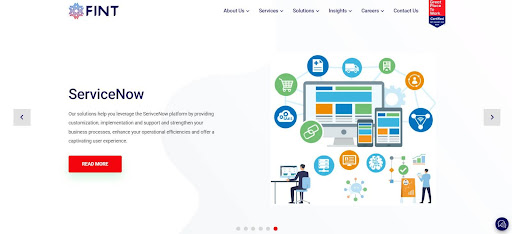
Fint Solution delivers MuleSoft integration services with a lean, hands-on approach aimed at startups and smaller firms. They combine technical depth with simplicity by offering API-led integrations using both the Anypoint platform and traditional ESB tools.
Fint focuses on the essentials, such as clear architecture, reusable assets, and structured governance, without unnecessary complexity. Their team specializes in service mediation and data transformation to ensure your systems stay interoperable across shifting formats and protocols.
The company also helps with Mule 3 to Mule 4 upgrades and manages version compatibility with minimal disruption. Their delivery model focuses on small, efficient teams that move quickly and stick to the project’s scope.
Key features:
- Anypoint & ESB integration for hybrid environments.
- Service mediation to manage message formats and protocols.
- Data transformation for mapping between application formats.
- Upgrade & migration support for Mule 3→4.
- Lean governance to control costs and timelines.
Pros:
- Focused API delivery keeps projects simple.
- Small teams allow faster communication and iteration.
- Experience spans multiple platforms for broader use cases.
Cons:
- Less visible presence in enterprise-scale projects.
- Minimal public material on MuleSoft tooling depth.
- May not offer deep specialization in every tech stack.
Website: fintinc.com
Pricing: Custom quote.
How to Choose MuleSoft Integration Professional Services
Selecting the right partner directly affects the success and stability of your integration strategy. Choosing the best MuleSoft integration professional service is critical; here’s how to evaluate them effectively:
Verify Experience with API‑Led Connectivity
You must ask for proof that the provider has built all three API layers: Experience, Process, and System APIs. These layers help you decouple changes in UI, logic, and backend systems.
Look for reusable assets in Anypoint Exchange, like templates for error handling or data mapping. That shows they’ve faced real integration use cases, not just theoretical designs.
Check Hybrid, Cloud‑to‑Cloud, and On‑Premise Expertise
Integration projects rarely stay purely in one environment. So, make sure to ask for deployment examples for AWS, Azure, private data centers, and SaaS platforms like Salesforce or Workday.
Strong providers can show full-stack pipelines involving cloud-native integrations, on-prem adapters, and secure VPN or Direct Connect patterns. That proves they can manage connectivity complexity across your infrastructure.
Side note: Planning to shift legacy systems to AWS as part of your integration roadmap? This article outlines real benefits retailers are seeing, especially when APIs are part of the equation.
Confirm Governance, Versioning, and SLA Practices
Reusable APIs need guardrails. Therefore, ask how the partner handles version control, API retirement, SLA enforcement, and formal review workflows.
Look for policies like automated version tagging in CI/CD pipelines or runtime policies via Anypoint API Manager. That ensures your APIs don’t break when dependencies shift.
Ask About API Security and Controls
Security is integral, not optional. So, you’ll need to confirm if they use OAuth scopes, JWT validation, message encryption, role-based access, and runtime threat detection. If the provider aligns with Anypoint Security or deploys API gateways for rate limiting and threat protection, that translates directly into reduced compliance risk.
Evaluate Post‑Deployment Monitoring and Support
Failures will happen. What matters is how quickly they’re detected and resolved. Look for solutions involving centralized logging (e.g., Splunk, ELK) and alerting tools (e.g., PagerDuty).
Ask if they offer support subscriptions with SLAs for uptime, escalation, and patching. Those actions protect your service reliability.
Review CI/CD Automation for API Releases
Manual deployments slow everything down and introduce errors. That’s why you need to confirm the partner uses automated pipelines with linting, contract testing, sandbox promotion, and rollback triggers. If they include Integration with GitOps or Jenkins, that adds speed and consistency to your release cycles.
Assess Timezone Alignment and Collaboration
When your teams (and possibly third-party vendors) operate across multiple regions, latency and overlap matter. Because of this, it’s best to ask for their collaboration model, tools (like Confluence or Jira), and daily sync structure. Even an extra two hours of overlapping work saves days in feedback loops.
Confirm Experience with Your Tech Stack
Ensure they’ve worked with your critical systems, such as Salesforce, SAP, Oracle, Workday, or custom legacy platforms. If you need EDI integration, ask for specific reference cases. A partner with relevant domain experience can avoid rework and accelerate the delivery of your integration roadmap.
Choosing the Right MuleSoft Integration Partner for Long-Term Impact
Your integration partner should support more than deployment. You need engineering precision, strong governance, and support for long-term delivery. Nova gives you certified MuleSoft architects, real-time collaboration, and full lifecycle services, from API-led design to post-deployment monitoring.
Our team handles hybrid rollouts, legacy migrations, and CI/CD pipelines without adding delays or complexity. With deep experience across finance, retail, and healthcare, we can solve system sprawl without breaking existing processes.
Whether you’re launching new services or stabilizing critical data flows, Nova helps you move faster without losing control. Learn more about Nova Cloud’s MuleSoft integration services.
FAQs
What is the difference between MuleSoft integration services and standard API development?
MuleSoft integration services offer full lifecycle API management, reusable connectors, governance, and hybrid system orchestration, which is far beyond what standard API development delivers. While standard APIs expose functionality, MuleSoft enables enterprise-wide, scalable, API-led integration with built-in tools for monitoring, versioning, security, and visual low-code development.
How much do MuleSoft integration services typically cost?
MuleSoft integration services usually range from $70,000 to over $250,000 per year. That includes platform licensing, API builds, and support & optimization. Costs scale based on API volume, environment size, and add-ons like Anypoint API Manager (~$1.5K/API) or premium support.
How long does it take to implement a MuleSoft integration?
Most projects fall into the 2-week to 4-month window. Simple use cases may take under 100 hours, but high-complexity setups can exceed 500 hours. Your timeline depends on system maturity, the number of touchpoints, and how many APIs require customization.
Do I need MuleSoft consulting services if I have in-house developers?
Yes, especially for enterprise use. Mulesoft consultants bring architecture planning, runtime tuning, and governance expertise your devs may not have. This avoids rework and strengthens long-term delivery.
What’s the risk of poor MuleSoft integration?
Failures can break system workflows, expose data, or delay core operations. Without experienced help, gaps in security measures or SLA visibility can cause major disruptions.
Share this article
Follow us
A quick overview of the topics covered in this article.

